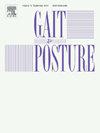当前基于计算机视觉的运动捕捉系统在步态分析中的可靠性和有效性:系统综述
IF 2.2
3区 医学
Q3 NEUROSCIENCES
引用次数: 0
摘要
传统的仪器步态分析(IGA)可以客观地量化步态偏差,但其成本高、实验室环境和方案复杂阻碍了其临床应用。基于姿态估计算法(PEA)的步态分析,从视频中推断关节位置,为检测步态异常和定制康复策略提供了一种可行的方法。然而,其在步态分析中的可靠性和有效性以及影响准确性的算法因素尚未得到综述。本系统综述旨在评估基于pea的步态分析系统的准确性,并确定影响其准确性的算法因素。方法通过Scopus、PubMed和IEEE共筛选644篇文献,其中20篇符合纳入和排除标准。我们提取了信度、效度和算法参数以进行详细回顾。结果和重要性大多数纳入的文章关注的是相对于金标准的有效性,而有限的证据使得确定可靠性具有挑战性。OpenCap展示了3D关节角度的MAE为4.1°,但旋转角度的更高误差需要进一步验证。OpenPose的时空参数的ICCs为0.89-0.994,矢状面二维髋关节和膝关节角度的MAE <; 5.2°(ICCs = 0.67-0.92,CCCs = 0.83-0.979),但踝关节运动学精度较差(ICCs = 0.37-0.57,MAEs = 3.1°-9.77°,CCCs = 0.51-0.936)。PEA的精度取决于相机设置、主干架构和训练数据集。本研究回顾了基于PEA的步态分析系统的准确性,为PEA在步态相关临床应用的未来研究提供支持。本文章由计算机程序翻译,如有差异,请以英文原文为准。
Reliability and validity of current computer vision based motion capture systems in gait analysis: A systematic review
Background
Traditional instrumented gait analysis (IGA) objectively quantifies gait deviations, but its clinical use is hindered by high cost, lab environment, and complex protocols. Pose estimation algorithm (PEA)-based gait analysis, which infers joint positions from videos, offers an accessible method to detect gait abnormalities and tailor rehabilitation strategies. However, its reliability and validity in gait analysis and algorithmic factors affecting accuracy have not been reviewed.
Research question
This systematic review aims to evaluate the accuracy of PEA-based gait analysis systems and to identify the algorithmic factors impacting their accuracy.
Method
A total of 644 articles were initially identified through Scopus, PubMed, and IEEE, with 20 meeting the inclusion and exclusion criteria. Reliability, validity, and algorithmic parameters were extracted for detailed review.
Results and significance
Most included articles focus on validity against the gold standard, while limited evidence makes it challenging to determine reliability. OpenCap demonstrated an MAE of 4.1° for 3D joint angles, but higher errors in rotational angles require further validation. OpenPose demonstrated ICCs of 0.89–0.994 for spatiotemporal parameters and MAE < 5.2° for 2D hip and knee joint angles in the sagittal plane (ICCs = 0.67–0.92, CCCs = 0.83–0.979), but ankle kinematics exhibited poor accuracy (ICCs = 0.37–0.57, MAEs = 3.1°-9.77°, CCCs = 0.51–0.936). PEA accuracy depends on camera settings, backbone architecture, and training datasets. This study reviews the accuracy of PEA-based gait analysis systems, supporting future research in gait-related clinical applications of PEA.
求助全文
通过发布文献求助,成功后即可免费获取论文全文。
去求助
来源期刊

Gait & posture
医学-神经科学
CiteScore
4.70
自引率
12.50%
发文量
616
审稿时长
6 months
期刊介绍:
Gait & Posture is a vehicle for the publication of up-to-date basic and clinical research on all aspects of locomotion and balance.
The topics covered include: Techniques for the measurement of gait and posture, and the standardization of results presentation; Studies of normal and pathological gait; Treatment of gait and postural abnormalities; Biomechanical and theoretical approaches to gait and posture; Mathematical models of joint and muscle mechanics; Neurological and musculoskeletal function in gait and posture; The evolution of upright posture and bipedal locomotion; Adaptations of carrying loads, walking on uneven surfaces, climbing stairs etc; spinal biomechanics only if they are directly related to gait and/or posture and are of general interest to our readers; The effect of aging and development on gait and posture; Psychological and cultural aspects of gait; Patient education.
 求助内容:
求助内容: 应助结果提醒方式:
应助结果提醒方式:


